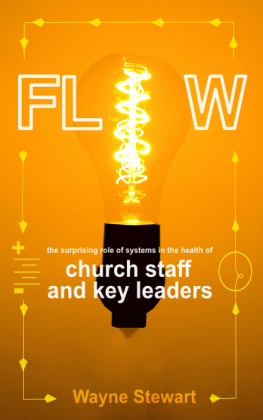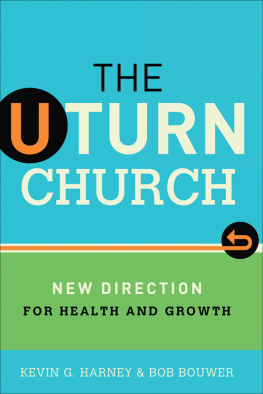Contents
May 1990:
The first images came back and everyone knew something was wrong. Very wrong.
A few weeks into low Earth orbit , the Hubble Space Telescope had produced nothing more than grainy distortions. She was, and remains, the most sophisticated scientific instrument ever focused on the cosmos. Given decades of attention and serious fundingeventually topping out at 4.7 billionthis was not supposed to happen.
The technical term was spherical aberration. The actual flaw? An edge of Hubbles nearly 8ft across lens, off by 2200 nanometers.
2.2 micrometers. 87 microinches.
Less than 1/50 of a hairs width.
Hard to catch, especially when the measurements showed true. It turns out a testing device had been improperly assembled, again at a very slight inconsistency, this time 1.3mm. More than enough. While hard to believe that the worlds premiere agency in the business of scientific precision could make such an error, the same would happen if a builder specd an 8ft. high wall, using a tape measure with a foot indicated every 13 inches.
They didnt see it. Until they saw it.
But the end of the story, at least so far, is a happy one. Three years were spent devising and training for the fix. While in orbit, NASA initiated a space-walk repair amounting to the installation of some very high-tech contact lenses. And what a repair it was. Given regular update missions, the last in 2014, weve received images of the universe we never thought possible, and learned more than we ever imagined.
The heavens declare the glory of God.
And now we get to see this truth (and the heavens) with ever increasing clarity and beauty becauseand this is very importantthough the problem seemed small and likely difficult to diagnose, the men and women of NASA were absolutely committed to reversing its affects and releasing the promise that Hubble presented.
Okay.
Lets make the shift to church. Your church. My church. The Church.
And more specifically, your church staff and key leaders.
Sometimes ministry feels like a grainy distortion. We know somethings wrong. Thats obvious. Its also frustrating. What did we do? What didnt we do? And whats next, especially when weve done all we know how.
The conversation unfolding in these pages is dedicated to those very questions, the idea that some measure of your challenges may be related to dynamics youve yet to see, and the hope that knowing where to look (and a little bit of what to do about it) can make a big difference for the ongoing health and vibrancy of your staff and key leaders.
Fall 2019
Resistance
As protective measure or moral stance: necessary, honorable. Among church staff and volunteer leaders? Not so much.
Think of your church staff and key volunteer leaders as a light bulb, fully lit. Glowing. Spreading. Spilling light across the room. What might this look like? The Word: informing and shaping interactions. The joyful Family of God living out its calling. The presence, gifts, and fruit of the Spiriton full display and in use. Grace in misunderstandings and reconciliation for hurts. Hope and energy towards a collective future. Transformation. Its an exciting proposition, not unlike our earliest images from the Book of Acts.
Now think of your staff and leaders as a light bulb, partially lit. Intermittent. That last cycle-on before the filament pops. One can imagine how this might appear as well. Deadlines passing, with key ministry initiatives held up somewhere. Staff and leader missteps in communication. Lack of trust or willingness to collaborate. Silos. A serious downshift in momentum and teamsmanship and a surprising lack of emotional margin.
Somethings not right.
In electrical circuitry language, theres something hinderingresistingthat free flow of energy. To be fair to the metaphor, some resistance is a good thing, just like physical strain builds muscle when faced with opposing force. But thats not whats going on here. The church-circuit isnt designed to induce strain. God may use this type of thing for our transformation but I dont know a pastor that actually designs church-life as an intentional struggle for staff and key leaders.
No, things just dont seem to be flowing.
When we sit down to reflect on it, were likely naming these problems as a lack of unity and mission effectiveness. People are not pulling together on the rope. They may or may not be fighting, but they are certainly not co-laboring in a manner consistent with New Testament ideals. And so we think, Is this it? Are we actually making a difference for the Kingdom? Or are we just putting on a decent presentation weekly?
But heres what is right.
The vast majority of church staff and pastors I know are not going to let this bulb flicker. Being church people, we investigate where were most comfortable: relationships, ideas, programming.
Outstanding. But have you found that one more sit down, one more level-setting conversation, one more ministry post-mortem, one more SWOT procedure just hasnt moved the needle? Do they matter? Absolutely.
Did they resolve the issue?
Let me ask: what if at least a portion of this non-flow problem lies in a deeper and perhaps yet simpler, place? What if the resistance youre experiencing is coming from somewhere you havent yet looked? Or simply feel ill-equipped to look? And what if our people-program-idea efforts actually lead us to some errant people-program-idea decisions? Church systems author John Wimberly raises a troubling thought:
when it comes to personnel issues, an individualistic approach often leads to false solutions and misidentified problems. By focusing on individuals, not systems, congregations, almost invariably, blame individuals for troubles that may in fact be more systemic.
That would be tragic. And a significant failure of our incarnational duty to one another.
Heres my pitch.
Some measure of your flow-challenges may be related to church systems issues, specifically, what we might call church macro-systems.
Two Scripture settings come to mind: Ex. 18:13-27 and Acts 6:1-7.
One tells the story of an overburdened justice system. The other presents a felt-needs delivery model in disrepair. Both are resolved by godly concern and the restructuring of the systems in question. Caring wasnt enough. I know, that sounds harsh. The first step was caring. The second step was caring enough to do something about it.
Moses humbly received corrective input and then did something. The Apostles received a critique regarding the early Churchs social support net and then did something. In both cases, new workflows, leadership, and expectations won the day. Led by godly, Spirit-infused wisdom, more and more people gained a timely hearing and resolution of grievances, and in the second case, women already suffering great loss were reminded of their immense value in quite tangible ways.
Not surprisingly, these principles surface outside the church walls as well.
In a podcast interview titled A Process for Process guest Robert Sfeir lets us in on his passion for this kind of work. As Senior Director of Engineering at Huge, Mr. Sfeir manages systems for this digital content agency of 1500 creatives and producers. Thats a bit to keep moving in the right direction. Heres his vision:
I love being able to introduce so much effectiveness into a process that people get time to breathe, people get time to think
Breathe.
Think.
Is this the way your staff and key volunteers would describe the good work of ministry at your church? If not, have you noticed them gasping or a bit fuzzy?
The effectiveness Mr. Sfeir seeks is not for the sake of the systems themselves. His goal is to make things flow, with people the beneficiaries, enjoying (metaphorically) two of the most basic things for which they were created. To breathe and think is a glorious vision.



















